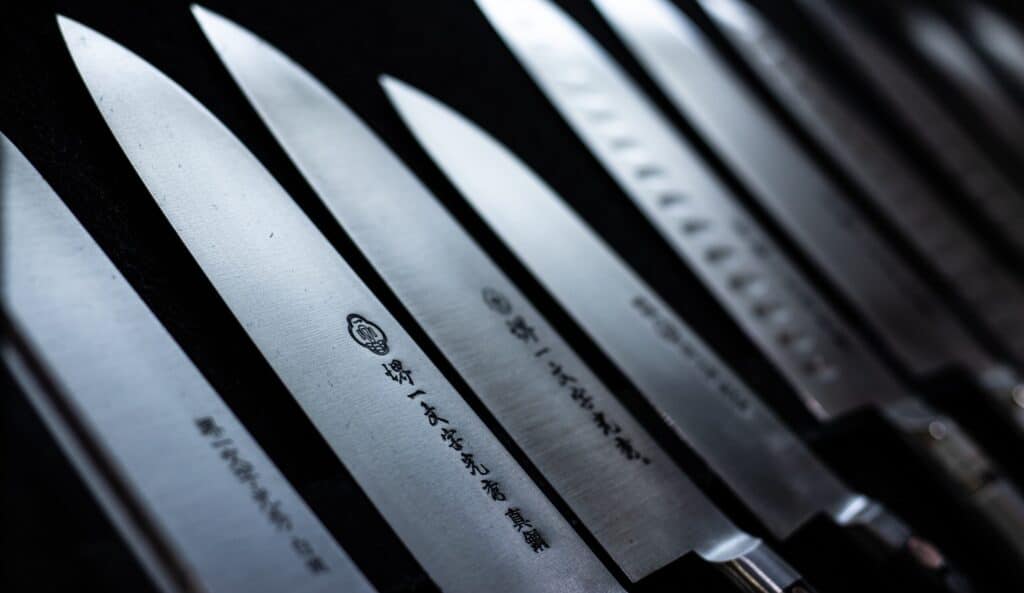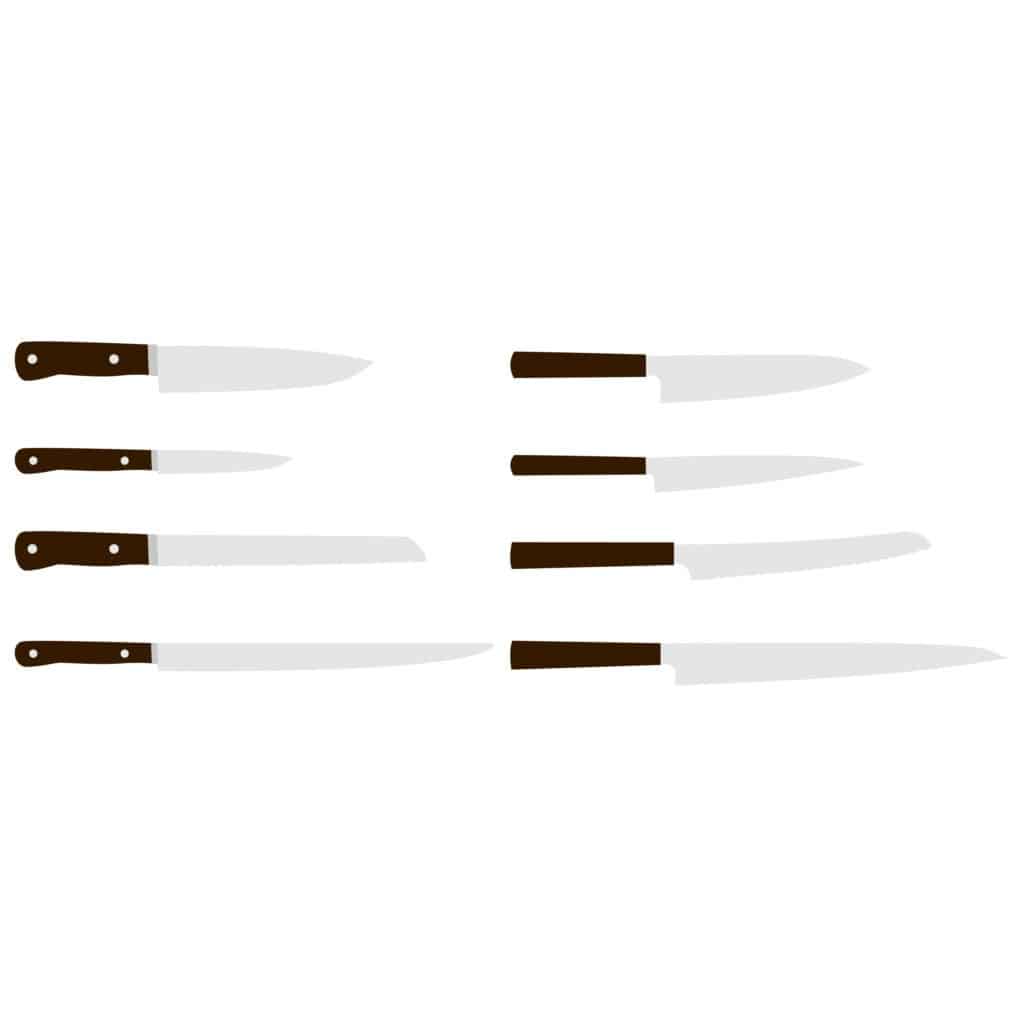
Cooking is something many of us love to do every day. That makes having a good knife an important part of the meal prep process. Santoku knives are frequently brought up as the ideal knife to have. But many people are uncertain about how to use them and what they are for.
Santoku knives are great for cutting meat. They are regarded as the Japanese all-rounder knife, but they do often need a little more maintenance and care than more durable western knife counterparts. Hard bones, in particular, can cause damage to a Santoku knife as Japanese blades, whilst sharp, are typically more brittle than western style knives.
History of the Santoku Knife and How to Use It
The Santoku knife got its name based on its use. “San,” which stands for three, represents the knife’s talent at cutting fish, vegetables, and meat. It is considered a 3-in-1 knife and is the most popular knife in Japanese homes.
Long ago, in Japan, cooking was more time-consuming than it is today. Back then, a different knife had to get used for each type of food. A Gyutou knife was used for meat. Sashimi knives were used for fish. Vegetables were cut with a Nakiri knife. Having a different tool for each product was inefficient and frustrating. That is why the Santoku knife got created.
Santoku knives have a wide surface and are typically 4 1/2 to 7 in long. They are sharpened on both sides and have a good balance and blade structure. The knife is easy to handle and it eliminates the need for multiple knives in most cases.
Even though the Santoku knife can handle numerous foods, it isn’t designed for specialty cuts like fish for Sashimi or pruning vegetables.
Santoku knives are becoming more popular in the West
With so many people using this knife, it has increased in popularity around the world. They can be easily found in the United States, Europe, Vietnam, and numerous other countries. Its versatility and skill, particularly with meat, have made it a popular staple in many kitchens.
How to Care for Your Santoku Knife
Never soak a Santoku knife in the sink with other items as it can cause the knife to chip when it hits other hard items and can begin the oxidation process, causing rust.
You should also avoid acidic foods such as lemon and tomatoes when using it. Acid wears away at the blade and can dull it. Ceramic knives are the best choice for slicing acidic foods.
Guide on how to care for your Santoku knife:
- Never cut hard items like frozen foods, bones, or seeds with your knife as this can cause chipping or other damage to your blade.
- When using your knife, use a smooth motion. Never twist the knife, especially during a cut.
- Never try to bend or flex the blade. You can chip or crack it by doing so.
- Always use a cutting board or cutting block. Wood boards are best for this type of knife, not a metal or glass surface.
- Never put it in the dishwasher. Always handwash it immediately after use. Dry the knife thoroughly before putting it away.
- Only sharpen your Santoku knife with Japanese water stones.
Do I need a Santoku knife
The Santoku knife is a versatile knife that should be a staple in every home. It can be used for numerous types of foods and makes a splendid cut. As long as you follow the care instructions your Santoku knife will last you for many years.
View our guide on the 9 best Santoku knives (opens new tab)
If you enjoy cooking and want to delve into the world of Japanese knives then a Santoku is a great choice.
They also make particularly good knives for cooks with smaller hands, Japanese knives, in general, have smaller designs than western counterparts, making them easy to handle for smaller cooks.

